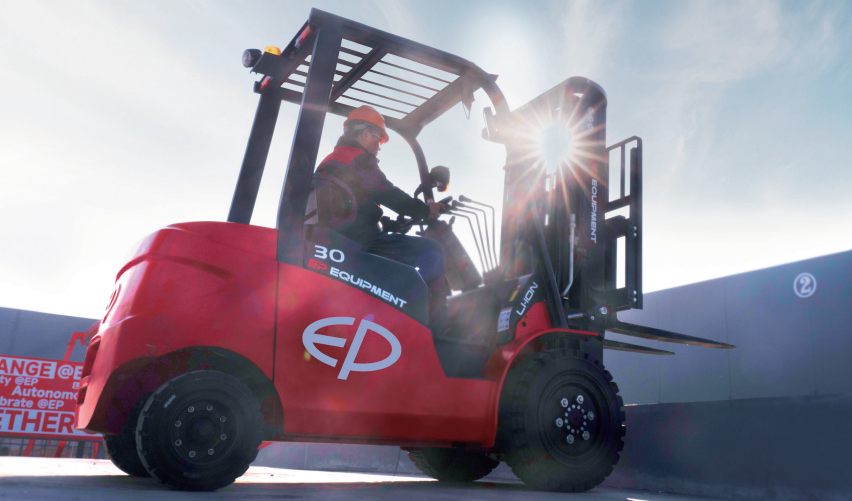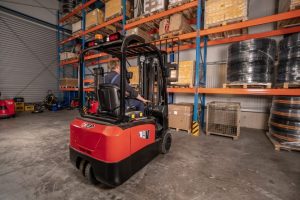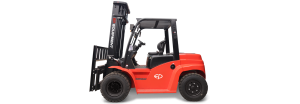Forklifts are essential in a variety of industries for material handling tasks. They come in different types and sizes, each designed for specific applications. Understanding forklift ratings is crucial for selecting the right equipment to meet operational needs efficiently. In this article, we’ll explore seven main classes of forklifts.
Class I: Electric counterbalanced
Class I forklifts are powered by electric motors, making them ideal for indoor use due to zero emissions and quiet operation. These forklifts are commonly used in warehouses, distribution centers, and places where ventilation is limited. Examples include three-wheel and four-wheel electric counterbalanced forklifts. EP Equipment offers models such as the CPD Series, which are designed for efficient cargo handling in confined spaces, ensuring safety and productivity.
Class II: Reach trucks
Class II forklifts are designed to operate in narrow aisles, optimizing storage space in warehouses and distribution facilities. They are ideal for handling pallets in high racks. Examples include reach trucks and order pickers. EP Equipment offers models such as the CQD Series, which is known for its agility and maneuverability in confined spaces, increasing storage efficiency.
Class III: Pallet trucks and stackers
Class III forklifts are pedestrian-operated and are ideal for work areas with limited space. They are often used for material movement in inventories, supermarkets, and retail stores. Examples include walk-behind electric counterbalance forklifts. EP Equipment offers models such as the EPT20-15ET Series, which are designed for efficient handling of light to medium loads in retail and logistics environments.
Class IV: Internal Combustion Counterbalanced Forklifts (cushion tires)
Class IV forklifts are equipped with internal combustion engines and are designed for indoor and outdoor loading and unloading operations. They are suitable for a variety of applications, from manufacturing operations to ports and outdoor warehouses. Examples include gas and diesel counterbalance forklifts.
Class V: Internal Combustion Counterbalanced Forklifts (pneumatic solid tires)
Class V forklifts are similar to Class IV forklifts but are equipped with pneumatic tires, making them ideal for operations on uneven surfaces, such as rough concrete pavements or outdoor terrain. They are commonly used in construction, landscaping, and outdoor material handling applications. Examples include gas and diesel counterbalance forklifts with pneumatic tires. EP Equipment offers models such as the CPCD25T8 Series, which are designed to handle heavy loads in tough outdoor environments.
Class VI: Tow Tractors
Class VI forklifts are designed to operate in narrow aisles and are powered by internal combustion engines. They offer the ability to maneuver in confined spaces, while still providing the power needed to handle heavy loads. Examples include internal combustion reach trucks. EP Equipment offers models such as the QDD Series, known for its exceptional maneuverability in narrow aisles, increasing storage efficiency in tight spaces.
Class VII: All-Terrain Forklifts
Class VII forklifts, also known as all-terrain forklifts, are designed to operate on uneven and demanding terrain, such as construction sites, mining sites, and agricultural areas. They are equipped with heavy-duty tires and robust traction systems to cope with harsh conditions. Examples include diesel all-terrain forklifts.
The Right Choice
Understanding the different classes of forklifts is essential for choosing the right equipment for a business’s specific material handling needs. EP Equipment offers a wide range of forklifts that cater to a variety of applications, from indoor environments to challenging outdoor terrain, ensuring operational efficiency and safety throughout material handling operations.



